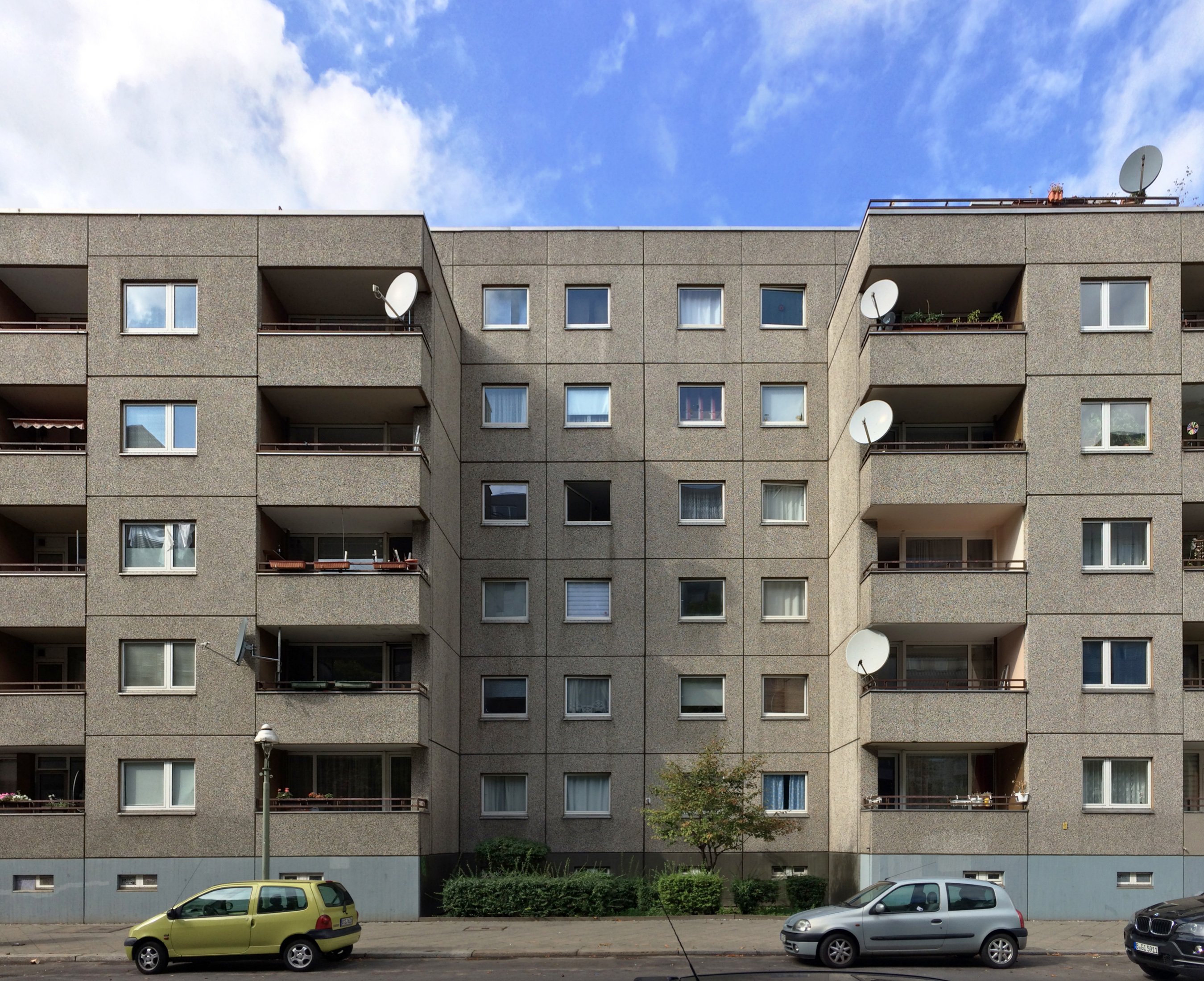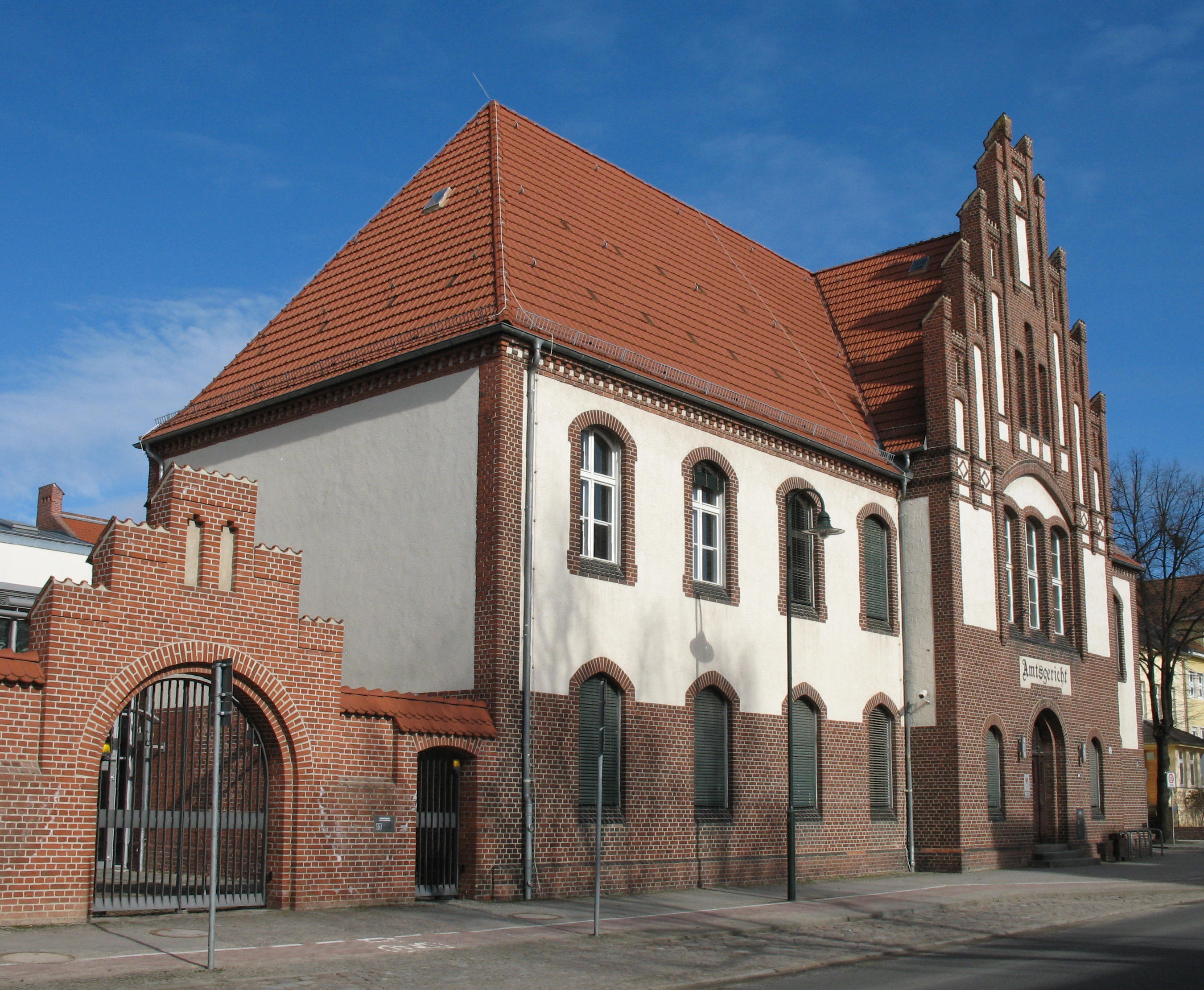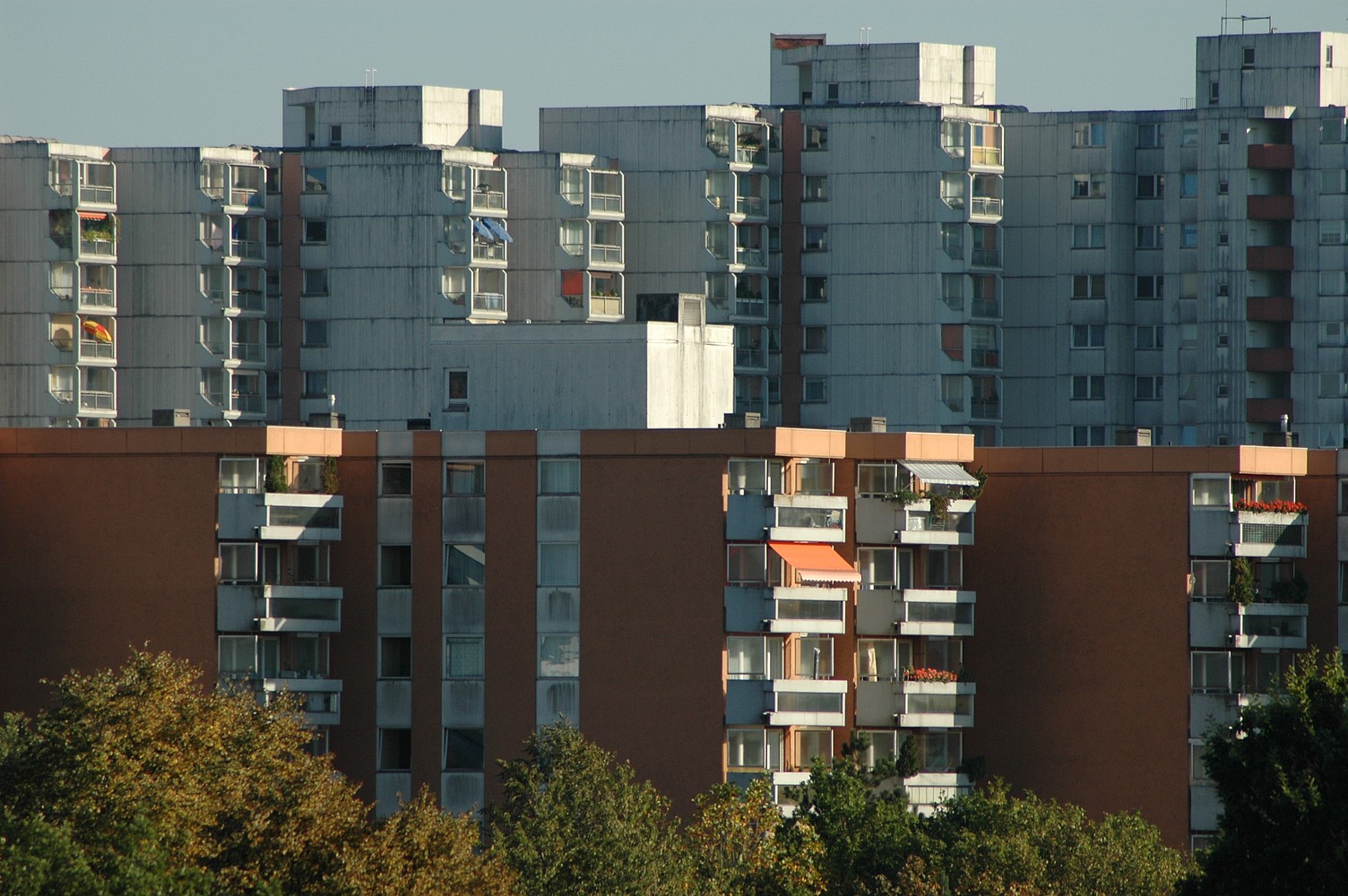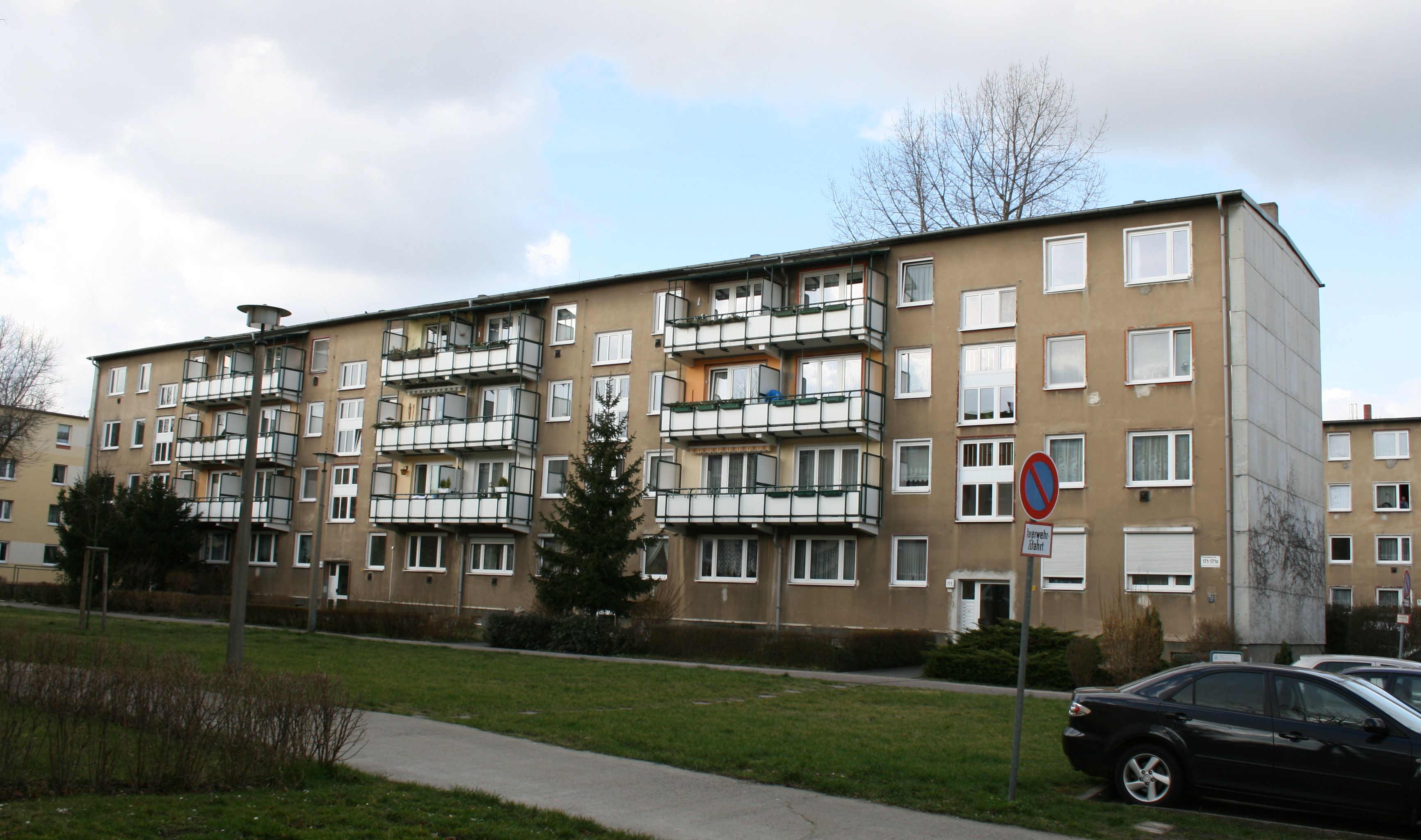|
Large-panel System Building
The large panel system-building is a building constructed of large, prefabricated concrete slabs. Such buildings are often found in housing development areas. Although large panel system-buildings are often considered to be typical of East Germany, the prefabricated construction method was used extensively in West Germany and elsewhere, particularly in public housing (see tower block). History Prefabrication was pioneered in the Netherlands following World War I, based on construction methods developed in the United States. The first German use of large panel system-building construction is what is now known as the ''Splanemann-Siedlung'' in Berlin's Lichtenberg district, constructed in 1926–1930. These two- and three-storey apartment houses were assembled of locally cast slabs, inspired by the Dutch ''Betondorp'' in Watergraafsmeer, a suburb of Amsterdam. In East Germany, large panel system-building areas have been designated as ''Neubaugebiet'' (''"New development area" ... [...More Info...] [...Related Items...] OR: [Wikipedia] [Google] [Baidu] |
Water Heating
Water heating is a heat transfer process that uses an energy source to heat water above its initial temperature. Typical domestic uses of hot water include cooking, cleaning, bathing, and space heating. In industry, hot water and water heated to steam have many uses. Domestically, water is traditionally heated in vessels known as ''water heaters'', ''kettles'', ''cauldrons'', ''pots'', or ''coppers''. These metal vessels that heat a batch of water do not produce a continual supply of heated water at a preset temperature. Rarely, hot water occurs naturally, usually from natural hot springs. The temperature varies with the consumption rate, becoming cooler as flow increases. Appliances that provide a continual supply of hot water are called ''water heaters'', ''hot water heaters'', ''hot water tanks'', ''boilers'', ''heat exchangers'', ''geysers'' (Southern Africa and the Arab world), or ''calorifiers''. These names depend on region, and whether they heat potable or non-potable w ... [...More Info...] [...Related Items...] OR: [Wikipedia] [Google] [Baidu] |
Hansaviertel
The Hansaviertel () is the smallest ''Ortsteil'' (district) of Berlin and is between Großer Tiergarten and the Spree River, within the central Mitte borough of Berlin. The district was almost completely destroyed during World War II but was rebuilt from 1957 to 1961 as a social housing project by international master architects such as Alvar Aalto, Egon Eiermann, Walter Gropius, Oscar Niemeyer, and Sep Ruf. Called ''Interbau'', the whole ensemble has two churches (St. Ansgar and Kaiser-Friedrich-Gedächtniskirche). It is now protected as a historic monument. History The area's streets are named after "Hansa cities"; cities that were part of the Hanseatic League, a trading network established in the Middle Ages. ''Hansaplatz'', the central square, has a small shopping arcade, a library and the Grips-Theater. Hansaplatz subway station was built in 1957, though the U9 line did not open until 1961. Some Gründerzeit buildings remained north of the Stadtbahn railway. Altonaer Stra� ... [...More Info...] [...Related Items...] OR: [Wikipedia] [Google] [Baidu] |
Halle-Neustadt
Halle-Neustadt (; popularly known as ''HaNeu'' , like Hanoi) was a city in the German Democratic Republic (East Germany). It was established as a new town on 12 May 1967, as an independent and autonomous city. The population in 1972 was 51,600 and in 1981 was more than 93,000. On 6 May 1990, Halle-Neustadt merged back into Halle again. The population has halved since then and was about 45,157 inhabitants on 31 December 2010. Halle Neustadt has been praised for being “sustainable” as a result of its urban planning, which includes high density living, a tram line serving the central corridor and the regional suburban rail system (S-Bahn). The development itself extends east to west for approximately 4 km and is approximately one kilometre wide. Much of the housing is located within the international mass transit standard of 400 metres from a station on the core axis. Virtually all housing is high rise, with some towers reaching 11 floors. Medium rise buildings tend to ha ... [...More Info...] [...Related Items...] OR: [Wikipedia] [Google] [Baidu] |
Hellersdorf
Hellersdorf () is a locality in the borough of Marzahn-Hellersdorf in Berlin. Between 1986 and Berlin's 2001 administrative reform, it was a borough in its own right, consisting of the current area of Hellersdorf as well as Kaulsdorf and Mahlsdorf. History Before German reunification in 1989 it was part of East Berlin. Situated at the eastern part of Berlin, the area is mainly a large housing estate from the 1980s, made up of ''Plattenbau'' ( concrete slab) buildings. The historic village of ''Helwichstorpp'' was first mentioned in a 1375 land registry of Emperor Charles IV, then also Margrave of Brandenburg. The city of Berlin acquired the former Hellersdorf manor in 1886; it was finally incorporated by the 1920 Greater Berlin Act as a part of the Lichtenberg Lichtenberg () is the eleventh borough of Berlin, Germany. In Berlin's 2001 administrative reform it absorbed the former borough of Hohenschönhausen. Overview The district contains the Tierpark Berlin in Fried ... [...More Info...] [...Related Items...] OR: [Wikipedia] [Google] [Baidu] |
Marzahn
Marzahn () is a locality within the borough of Marzahn-Hellersdorf in Berlin. Berlin's 2001 administrative reform led to the former boroughs of Marzahn and Hellersdorf fusing into a single new borough. In the north the Marzahn locality includes the neighbourhoods of ''Bürknersfelde'' and ''Ahrensfelde'', an overbuilt strip of land which once had belonged to the Brandenburg municipality of Ahrensfelde and was incorporated into Berlin in 1990. Geography Subdivision Marzahn is divided into three zones (''Ortslagen''): *Marzahn-Nord (''Berlin-Ahrensfelde'') *Marzahn-Mitte *Marzahn-Süd History The historic village of Marzahn was first mentioned as ''Morczane'' in a 1300 deed by Margrave Albert III of Brandenburg-Salzwedel, when he granted the estates to the Friedland Cistercian abbey (in today's Neuhardenberg). After the Thirty Years' War it fell to Elector Frederick William of Brandenburg. The new village church was finished in 1871 according to plans by Friedrich August St� ... [...More Info...] [...Related Items...] OR: [Wikipedia] [Google] [Baidu] |
German Reunification
German reunification (german: link=no, Deutsche Wiedervereinigung) was the process of re-establishing Germany as a united and fully sovereign state, which took place between 2 May 1989 and 15 March 1991. The day of 3 October 1990 when the German Reunification Treaty entered into force dissolving the German Democratic Republic (GDR; german: link=no, Deutsche Demokratische Republik, DDR, or East Germany) and integrating its recently re-established constituent federated states into the Federal Republic of Germany (FRG; german: link=no, Bundesrepublik Deutschland, BRD, or West Germany) to form present-day Germany, has been chosen as the customary ''German Unity Day'' () and has thereafter been celebrated each year from 1991 as a national holiday. East and West Berlin were united into a single city and eventually became the capital of reunited Germany. The East Germany's government led by the Socialist Unity Party of Germany (SED) (a communist party) started to falter on 2 May 1 ... [...More Info...] [...Related Items...] OR: [Wikipedia] [Google] [Baidu] |
Berlin
Berlin ( , ) is the capital and largest city of Germany by both area and population. Its 3.7 million inhabitants make it the European Union's most populous city, according to population within city limits. One of Germany's sixteen constituent states, Berlin is surrounded by the State of Brandenburg and contiguous with Potsdam, Brandenburg's capital. Berlin's urban area, which has a population of around 4.5 million, is the second most populous urban area in Germany after the Ruhr. The Berlin-Brandenburg capital region has around 6.2 million inhabitants and is Germany's third-largest metropolitan region after the Rhine-Ruhr and Rhine-Main regions. Berlin straddles the banks of the Spree, which flows into the Havel (a tributary of the Elbe) in the western borough of Spandau. Among the city's main topographical features are the many lakes in the western and southeastern boroughs formed by the Spree, Havel and Dahme, the largest of which is Lake Müggelsee. Due to its l ... [...More Info...] [...Related Items...] OR: [Wikipedia] [Google] [Baidu] |
Nikolaiviertel
Founded about 1200, the (Nicholas' Quarter) of Alt-Berlin, together with nearby Cölln, jointly make up the reconstructed historical heart of the German capital of Berlin. It is located in Mitte locality (in the homonymous district), five minutes away from Alexanderplatz. Geography Situated on the eastern shore of the river Spree, it is bounded by the streets ''Rathausstraße'', ''Spandauer Straße'' and ''Mühlendamm''. The neighborhood itself is named for the eponymous deconsecrated Nikolaikirche ("Saint Nicholas Church") at its heart, i.e. Berlin's oldest church. History The two settlements of Old Berlin as well as Cölln on the other side of the Spree originated along an old trade route, the ''Mühlendamm'' (Mills Dam), a ford where the river could be easily crossed. The Nicholas' Church, originally a late Romanesque basilica, was erected about 1230. The area around the church with its medieval alleys in the main had been preserved throughout the centuries, until it wa ... [...More Info...] [...Related Items...] OR: [Wikipedia] [Google] [Baidu] |
Bernau Bei Berlin
Bernau bei Berlin (English ''Bernau by Berlin'', commonly named Bernau) is a German town in the Barnim district. The town is located about northeast of Berlin. History Archaeological excavations of Mesolithic-era sites indicate that this area has been inhabited since about 8800 BC. The city was first mentioned in 1232. The reasons for its founding are not known. According to a legend, Albert I of Brandenburg permitted the founding of the city in 1140 because of the good beer which was offered to him. Beer was brewed with water from the river Panke. Therefore, it was forbidden by law to pollute this river with waste and excrement when brewing took place. Bernau had its boom years before the Thirty Years' War. Large parts of the defensive wall with town gate and wet moats are relics of that time. These helped Bernau defend itself successfully against attackers, e.g. the Hussites in 1432. Following the plague and war, Bernau became poor and bleak. Frederick I of Prussia settled 25 ... [...More Info...] [...Related Items...] OR: [Wikipedia] [Google] [Baidu] |
Neuperlach 0629
Neuperlach (Central Bavarian: ''Neiperlach'') is a borough in the southeast of the Bavarian capital, Munich. and is part of the city district no. 16, Ramersdorf-Perlach. It was built starting in 1967 east of the former village of Perlach on the ground of the former Perlacher Haid. Neuperlach is located east of the boroughs Ramersdorf and Perlach, south of the city districts no. 14 (Berg am Laim) and no. 15 (Trudering-Riem), west of the borough Waldperlach and north of Unterbiberg (which is part of the municipality of Neubiberg). The borough encompasses multiplehousing estates, including several high-rise estates, and is one of Germany's biggest satellite towns. In the center of Neuperlach the large pep shopping mall is located, one of the most profitable shopping centers in Germany. The Hachinger Bach The Hachinger Bach is a river in Bavaria, Germany. It flows southwards of Munich, through the townships of Oberhaching, Taufkirchen, Unterhaching and Unterbiberg, and enters th ... [...More Info...] [...Related Items...] OR: [Wikipedia] [Google] [Baidu] |
Q3A Panel House
Q3A is an abbreviation for a type of three, four and five storey prefabricated buildings constructed in the GDR in the 1950s and 1960s. The letter "Q" in the word stands for "Querwandbau" (cross wall construction). Description In a Q3A panel house, the walls are constructed entirely from concrete blocks, while the ceiling consists of multiple concrete plates that were placed perpendicular to, and on top of the wall elements. This explains the source of the "cross wall construction" name. The flat roof construction is the most visible difference between the Q3A series and other East Germany buildings of its time. Q3A homes are equipped with a furnace for heating, and a balcony for use by tenants was also provided in approximately half the cases. In later years (after the fall of the Berlin Wall and German Reunification), most houses were retrofitted with additional balconies. The concrete blocks and ceiling elements of the first houses were manufactured at an industrial plant ... [...More Info...] [...Related Items...] OR: [Wikipedia] [Google] [Baidu] |







